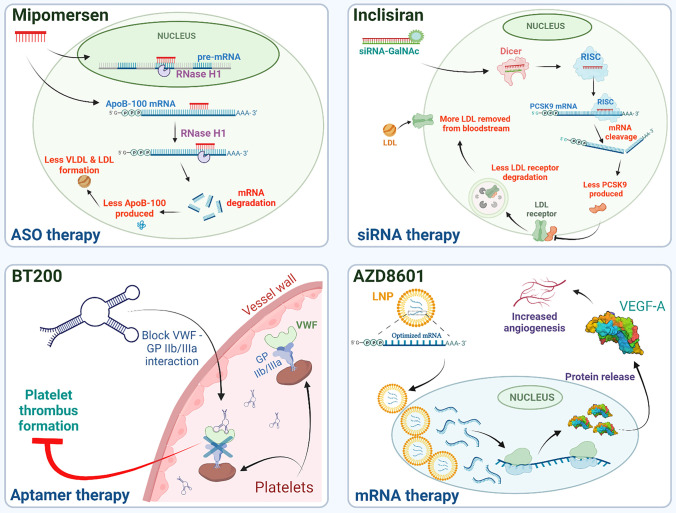Fig. 1.
Mechanisms of action for selected RNA-based drugs to treat cardiovascular diseases. Top left: Mipomersen is an example of an ASO drug (red) which hybridizes to ApoB-100 mRNA and recruits RNase H1 to cleave the targeted mRNA, preventing apolipoprotein B production, which then reduces the synthesis of VLDL and LDL. Top right: Inclisiran as an siRNA therapy that targets PCSK9 mRNA. The targeting strand is incorporated into RISC complexes which then recognize the targeted mRNA and initiates its cleavage and degradation. This decreases the amount of PCSK9 protein produced, blocking the PCSK9-driven internalization and degradation of LDL receptors. The increased numbers of cell surface LDL receptors then remove more LDL from circulation thereby reducing bloodborne LDL levels. Bottom left: BT200 is an RNA aptamer designed to inhibit aberrant thrombus formation. This aptamer blocks the interaction between VWF (von Willebrand factor) and GP IIb/IIIa receptors on platelet membranes, triggering the blockage of platelet thrombus formation. Bottom right: AZD8601 is an mRNA therapy designed to increase angiogenesis. Optimized VEGF-A mRNAs are packaged in lipid nanoparticles (LNPs) which are endocytosed by the targeted host cells. The mRNA is then translated into VEGF-A protein which increases angiogenesis. Figure generated using BioRender.com

